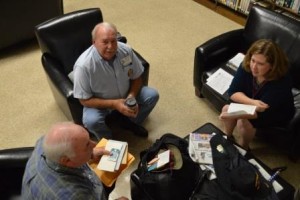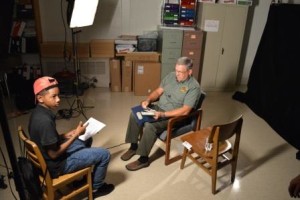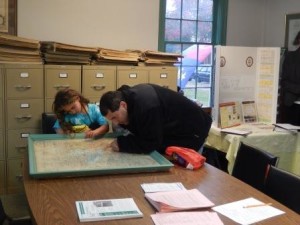Karsonya Whitehead interviews Lester Spence
When I was seven years old, I built a mini-writing studio in the corner of my room. I would then place my dolls one-by-one on a pillow in front of me and pretend that they were famous writers and that I (also a writer) was interviewing them. I would ask them to tell me all about why they write, what inspires them, and who they wish that they could grow up and be one day. In this series, I have an opportunity to make my childhood dream into a reality. I sit down with other writers to try and find out who and what inspires them, why they write, and how they want to be either seen by the world or remembered by it. This month, I interview Dr. Lester K. Spence to discuss his new book, Knocking the Hustle: Against the Neoliberal Turn in Black Politics.
Karsonya Whitehead: Why did you decide to write this book?
Lester Spence: Because I wanted to read a book that laid out how black politics had been, for lack of a better term “infected,” by neoliberalism and couldn’t find it. So I realized I had to write it. I also wanted to work with a radical independent publisher like Punctum and this seemed to be the project to do it with.
KW: Which writers inspire you?
LS: That list is a bit too long for print. But I don’t think we give enough credit to our “antagonistic cooperators”—the folk who, for whatever reason, negatively inspire us. I’m not going to list those folk either, mind you, but they know who they are. (Thank you for your negative inspiration!)
KW: What does being a writer mean to you?
LS: It means having a profound gift. The work I’ve written has the capacity to touch folk long after I’m gone, in cities, towns, nations I’ll never ever visit, in ways I can only partially imagine. But it also means being held hostage, in a way. I don’t write because I like writing, although often I do. I write because I have to write, almost like I have to breathe. Finally, though, it means coming to grips with failure, every day, because rarely if ever does a writing project I envision turn out exactly how I imagine it.
KW: What book do you wish you could have written?
LS: Another “too long to list” question! I don’t necessarily wish I’d written Ta-Nehisi Coates’ Between the World and Me, Marlon James A Brief History of Seven Killings, Joe Soss, Sanford Schram, and Richard Fording’s Disciplining the Poor, Richard Iton’s In Search of the Black Fantastic, Jonathan Hickman’s Fantastic Four run…but I do kind of wish I’d written something like Cathy Cohen’s Boundaries of Blackness….which is why I’m at work now on a book I’m tentatively calling Live and Let Die: The Topologies of Blackness.
KW: You refer to yourself as a scholar/writer – can you explain what this means to you?
LS: It just means that I’m a professor who got into the Academy to write. Some people enter the Academy to solve puzzles. Some enter the Academy to teach. I entered the Academy to write.
KW: What writing advice do you have for other aspiring authors?
LS: Write every day. Every weekday at least. And pay yourself first by writing the first thing in the morning.
KW: What advice would you give to your younger self?
LS: The same two pieces of advice I tell some of my students. There are more of us than we think, though not as many as we’d like. Find your folk. And secondly, it never ever stops.
KW: Tell us about the cover/s and how it/they came about.
LS: I became a serious amateur photographer. In both cases I chose three or four of my pictures that I thought would make good covers, and the publishers chose one of them. The cover for Stare in the Darkness is a picture I took of a Kris Klayton (DJ Karizma) at a house music party—given that house is a very different genre than hip-hop I didn’t think they’d go with it. I’m glad they did—it ended up looking better than the picture I’d have chosen. The cover for Knocking the Hustle is a picture of an old Greyhound bus station that I shot while waiting at a red light.
About the Writer: Lester K. Spence is an Associate Professor of Political Science and Africana studies at Johns Hopkins University known for his academic critiques of neoliberalism and his media commentary on race, urban politics, and police violence. He is an award winning scholar (in 2013, he received the W.E.B. DuBois Distinguished Book Award for his book, “Stare in the Darkness: The Limits of Hip-hop and Black Politics”) and teacher (in 2009, he received an Excellence in Teaching Award), and can regularly be heard on National Public Radio and the Marc Steiner Show. Find him on Facebook or Twitter (@lesterspence) and read more on his blog. “Knocking the Hustle” will be released this winter.
About the Interviewer: Karsonya “Kaye” Wise Whitehead, Ph.D. is Assistant Professor, Department of Communication at Loyola University Maryland and the Founding Executive Director at The Emilie Frances Davis Center for Education, Research, and Culture. Her most recent work, Letters to My Black Sons: Raising Boys in a Post-Racial America, was published by Apprentice House in January 2015. This blog was originally posted on her website on July 2, 2015.




